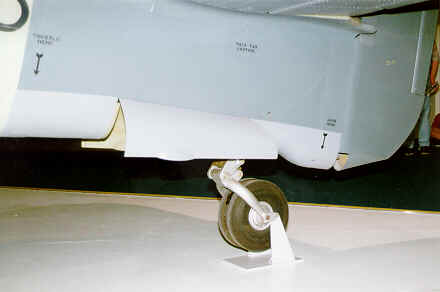by Martin Waligorski
Initially conceived as an upgraded, thin-wing Typhoon, the Tempest reached the ultimate in piston fighter performance. The Tempest Mk.II was designed to accommodate the Bristol Centaurus radial engine, thus loosing its beard-type radiator so typical for the Napier Sabre-powered Typhoons and Tempests. The prototype Tempest II made its maiden flight on June 28, 1943, but the production machines of this mark arrived just too late to take part in the war. Instead, the elegant Mk. II served with RAF squadrons in Germany and in the far East, being also sold to Iranian and Indian air forces. The aircraft evolved further into the last Hawker propeller-driven classic – the Fury.
The aircraft is similar in may respects to the Tempest Mk.V, minus of course the engine mount, which is the popular modelling subject. In 1/72nd scale, there are Heller and Matchbox kits. The Matchbox kit contains the Centaurus nose, which can be utilized with both models to convert them to Mk.II configuration. In quarter scale, the recent Eduard kit looks promising.
The pictures below have been taken at the Royal Air Force Museum in Hendon, England.
Hawker Tempest Mk.II in Detail

General view of the aircraft in RAF Museum. |
Photo: Martin Waligorski

Front view of the nose shows how tightly enclosed is the Centaurus engine. Four-blade prop and large spinner complete this very aerodynamic shape. |
Photo: Martin Waligorski
 Looking at the cowling from behind. The exhaust stacks are prominent, as is the second openingat the firewall. Looking at the cowling from behind. The exhaust stacks are prominent, as is the second openingat the firewall. |
Photo: Martin Waligorski

Looking closer at the exhaust stacks. Note that there is even an exhaust pipe on the underside of the cowling. The side profile of the wing root air intake can also be seen. |
Photo: Martin Waligorski
 The fuselage starboard side, revealing the smooth joint lines. The canopy opening rails can be seen on the top, and a typical Hawker-style retractable step allows for easier access to the cockpit. The fuselage starboard side, revealing the smooth joint lines. The canopy opening rails can be seen on the top, and a typical Hawker-style retractable step allows for easier access to the cockpit. |
Photo: Martin Waligorski
 Another view of the bubble canopy. Another view of the bubble canopy. |
Photo: Martin Waligorski

The armament of the Tempest consisted of 4 20mm cannon. These two blisters on the wing’s top surface accommodate their ammunition drums. |
Photo: Martin Waligorski
 Looking under the wing, this is the main wheel well with the inner undercarriage cover. |
Photo: Martin Waligorski
|
Main undercarriage leg and wheel. |
Photo: Martin Waligorski
 The large tail of the fighter can been seen here. The large tail of the fighter can been seen here. |
Photo: Martin Waligorski

Looking under the tail, the retractable tail wheel with double tire can be seen. The small stencil marks mark the handling points on the airframe. |
Photo: Martin Waligorski
